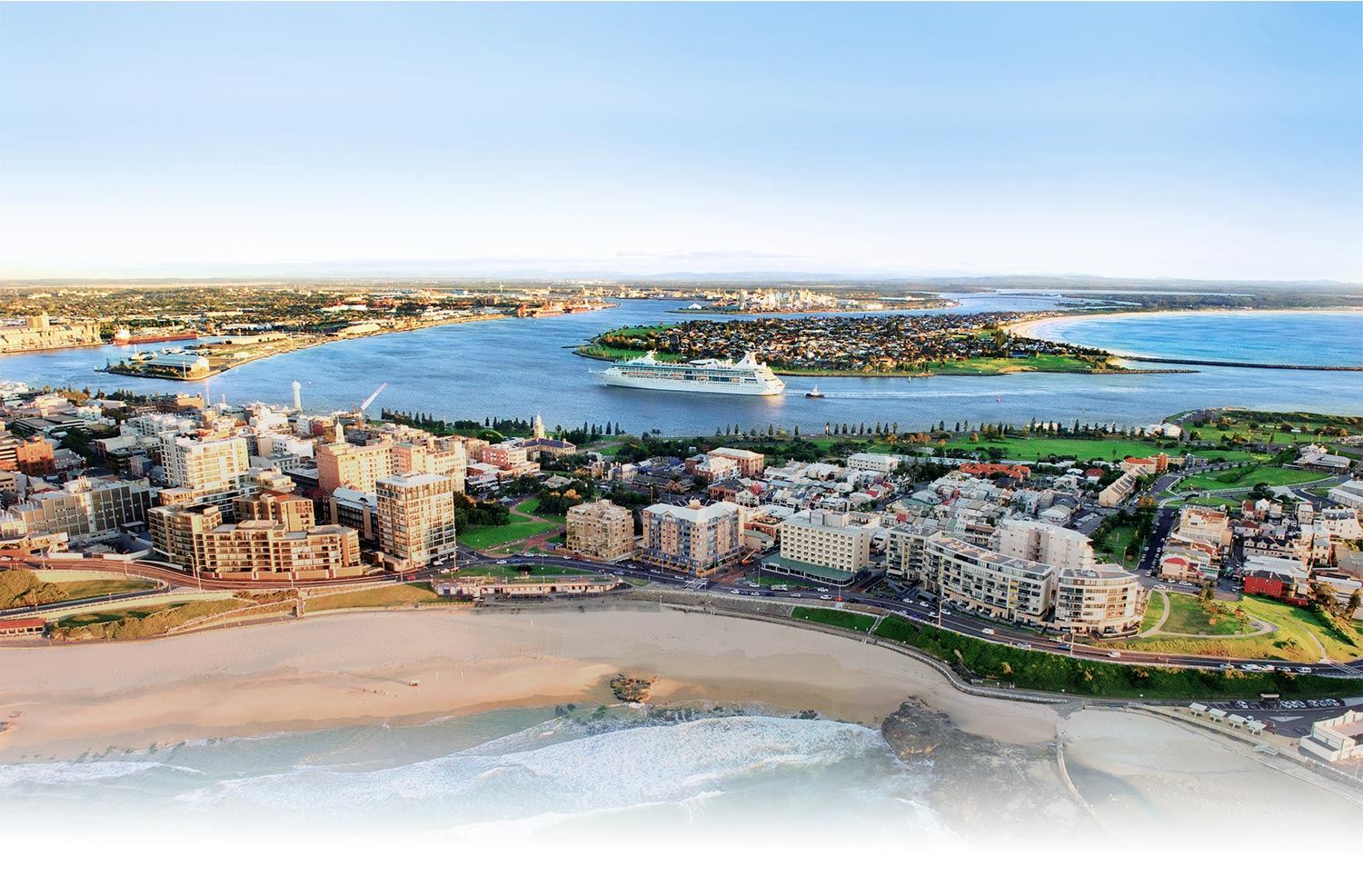
Remembering the Pasha Storm
16 May 2017
Council's flood experts are teaming up with Newcastle Museum and the community on an exhibition to commemorate the 10th anniversary of the epic Pasha Bulker storm that claimed nine lives.
Remembering the Pasha Storm -- on until 11 June 2017 -- features a memory wall for visitors to leave their own recollections and experiences from the June 2007 storm.
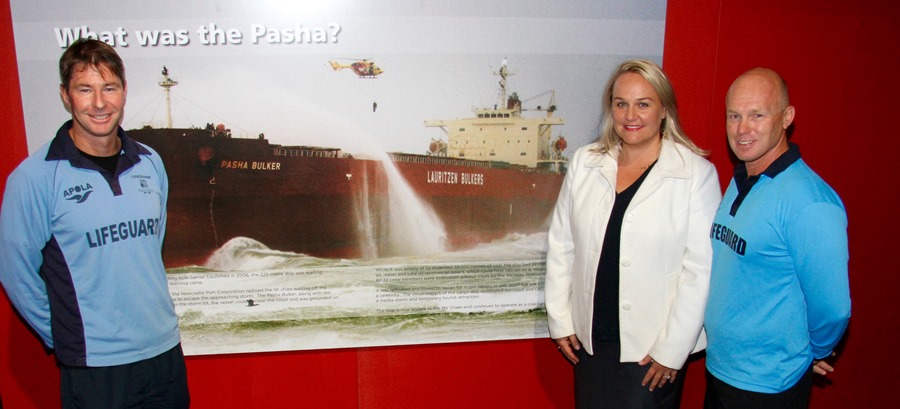
NCC Lifeguards Adam Metcalf (left) and Paul Bernard reflect on their role aboard jetskis in the Pasha Bulker rescue 10 years ago with Lord Mayor Nuatali Nelmes.
The exhibition also examines why the storm was so devastating and what happened during the 24 hours of mayhem immortalised by the sight of the 225m coal carrier Pasha Bulker beached at Nobbys.
The Remembering the Pasha Storm exhibition examines the lessons learnt and features:
- actual rescue gear used by the Westpac helicopter crew during the storm
- a new custom created virtual-reality experience that allows visitors to relive the day
- images and video memories from NBN and Westpac Rescue Helicopter Services
- a model simulating how the floodwaters flowed and the damage done
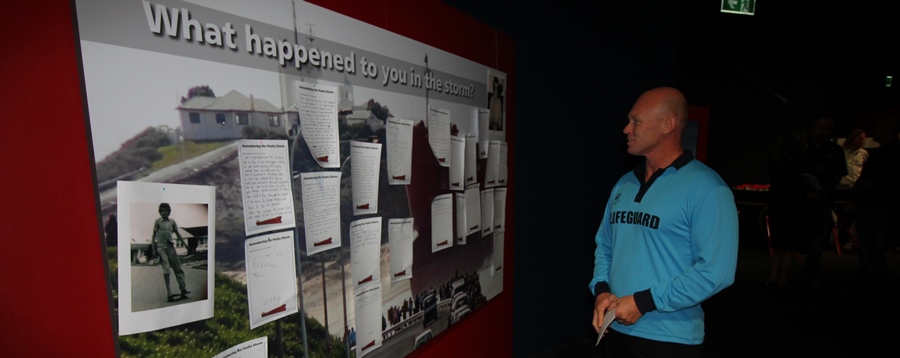
NCC Lifeguard Paul Bernard inspects the memory wall in the exhibition.
Newcastle Lord Mayor Nuatali Nelmes said Newcastle took a battering in the storm of 2007.
"While it's most often remembered for the stranding of the Pasha Bulker, the 2007 storm also devastated our community and took the lives of several Novocastrians," the Lord Mayor said.
"There were so many heroes from the rescue operations at Nobbys and across flooded suburbs and I'm sure there are still many untold stories.
"We are asking people to tell stories of that time or bring in prints of photos, name those who were lost and remember them to ensure we fully capture the history of that epic weather event."
Newcastle City Council lifeguards and members of Westpac Rescue Helicopter crews that assisted the Pasha Bulker crew were on hand at the Museum today to view the exhibition and share their memories of that June long weekend 10 years ago.
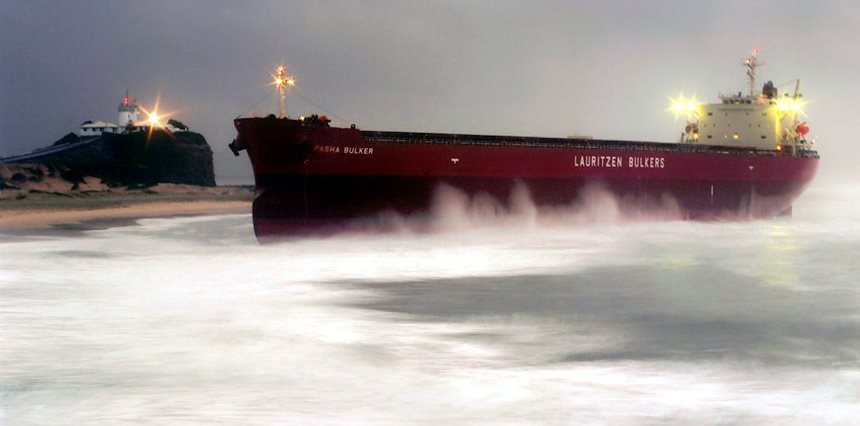
Photograph by Daniel James - Image courtesy of Newcastle Maritime Centre
The exhibition coincides with the Floodplain Management Australia conference in Newcastle at NEX - Wests City from 16-19 May. Delegates from all over Australia have gathered to discuss how to make the country safer and more resilient from major flood events.
Newcastle City Council is working to mitigate flood risks in Wallsend, Stockton, Cooks Hill, Wickham and other low-lying areas within the local government area. Education campaigns have been rolled out to raise awareness of flooding and an online tool has been developed to help residents identify the areas that are most at risk. Drainage systems are also being renewed across the city.
Re-live the storm event through virtual reality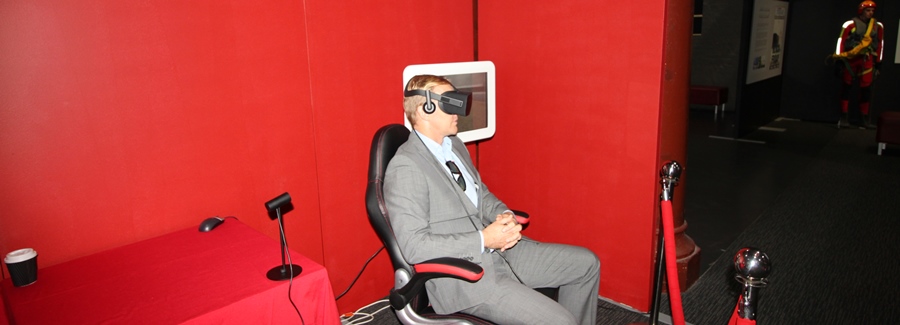
Visitors to the exhibition can re-live the drama of the Pasha Storm from a number of different perspectives through a virtual reality experience. See the storm event through the eyes of the rescue crews on Nobbys Beach and in the Westpac Rescue Helicopter, as a crew member on the Pasha Bulker or caught in the rising flood waters inundating Newcastle West.
Created by local company Virtual Perspective with funding from Newcastle's Smart City initiative, this volunteer-guided experience is only available at specifically scheduled times throughout the exhibition:
- Weekdays from 1pm - 3pm
- Weekends from 11am - 1pm
Background on the Pasha storm
In early June 2007 a low-pressure system off the mid-north coast of NSW intensified and moved south to affect areas of the Central Coast and the broader lower Hunter region.
The Pasha Bulker was beached on the morning of Friday 8 June just before the height of the storm that afternoon and just before the June long weekend.
Around 10,000 Newcastle properties experienced flooding after more than 300mm of rain fell over 24 hours, and 5,000 cars were written off.
By the end of August, the Insurance Council of Australia had advised that insurance claims would exceed $1 billion, ranking second only behind the 1999 Sydney hail storm.











